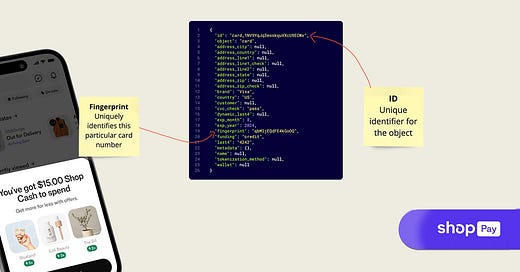DoP Deep: Shopify Pay's expansion and understanding payment terminology
A deeper look at Shop Pay, the payment landscape and network effects
🔒 DoP Deep articles are available for paid subscribers only. If you’d like to upgrade to receive them you can do so below. Or you can find out more about paid access here.
Hi product people 👋,
Rich from the Department of Product here! In the weekly briefing, we recently reported on Shopify’s decision to expand Shop Pay outside of its own platform, which meant that ecommerce stores were able to use Shop Pay on other ecommerce platforms. This has significant repercussions for the ecommerce market and product builders as Shopify’s Pay button is now a legitimate competitor to PayPal and Stripe.
In this DoP Deep newsletter we’ll dig a little deeper into Shop Pay’s expansion and we’ll explore some important payment terminology that’s useful for you to know if you ever find yourself working on payment integrations in your company.
Coming up:
Understanding Shopify’s Shop Pay’s expansion and what it means for payment providers
Important payment terminology to know
How to productize your tech stack
Useful links and tools
What is Shop Pay and what does its expansion mean?
If you've never heard of Shop Pay before, it’s a payment product built by Shopify which is a quick way for users to check out and pay. Shop Pay is actually an iteration of two products: the standalone app called Shop and the Shop Pay payment checkout. We’re going to focus on Shop Pay and payment gateways in this edition but it’s worth also knowing a bit about the Shop app and how that helps Shopify’s strategy, too.
The Shop app is a standalone app which allows users to shop across and discover different Shopify powered stores. The idea behind the app is that consumers can discover stores they might be interested in based on their previous purchase history and track all of their purchased products in one place.
Shop Pay is an evolution of the standalone Shop app - and an extension of the consumer-facing Shopify brand. Shopify built Shop Pay from the ground up as a way to improve conversion. It says Shop Pay outperforms competitors by up to 36%.
Shopify says it does this by offering a world class experience across 4 strategic advantages:
Identity network
Scale
Consumer trust
Innovation
Shopify’s scale alone means that it can destroy competition across each of these dimensions. Here’s what the company had to say on its efforts to improve checkout conversion, for example:
At Shopify, we have more engineers working just on making checkout high-converting and performant, than some other companies have working on their entire commerce solution. Building on our platform ensures you’re always on the cutting edge of checkout technology.
This is an impressive flex - and it’s designed to entice ecommerce merchants large and small to build on its network.
The payment gateway landscape - a snapshot
The power of network effects
Owning an identity network means Shopify knows its customers - and this is perhaps its single biggest strategic advantage.
Because of the powerful identity network, Shopify can pre-fill all of its users’ information and boost conversion. One of the biggest drags on conversion is asking users to fill in their address and payment details. The identity network removes this friction instantly - and the expansion of Shop Pay means this identity network will only get bigger.
Shop Pay’s expansion outside of Shopify is a classic example of using network effects to boost your own product; the more people who use it, the more valuable it becomes.
The hypothesis behind Shop Pay’s expansion
Recently, the company announced that it is to make Shop Pay available to ecommerce stores not hosted on Shopify. The hypothesis behind this decision is that expanding Shop Pay to non-Shopify stores means conversion on Shopify stores will rise as brand awareness of Shop Pay increases. Plus, the more people who use Shop Pay, the bigger the identity network.
It’s a smart move. And as part of the announcement, Shopify also confirmed that Shop Pay will be available as a component as part of Shopify’s Commerce Components. More on that later.
But if you’re ever in a situation where you might be assessing whether or not to adopt a payment method like Shop Pay, it’s important to know basic ecommerce and payment terminology.
Important payment terminology worth knowing
Whilst custom integrations vary from company to company, a typical payment user flow involves a bunch of different entities including:
Merchants (the stores selling products)
Customers
Banks (acquiring and issuing banks)
Payment gateways
Payment processors
This video neatly summarises how a payment gets processed and should be helpful if you find yourself ever having to implement a payment integration yourself:




